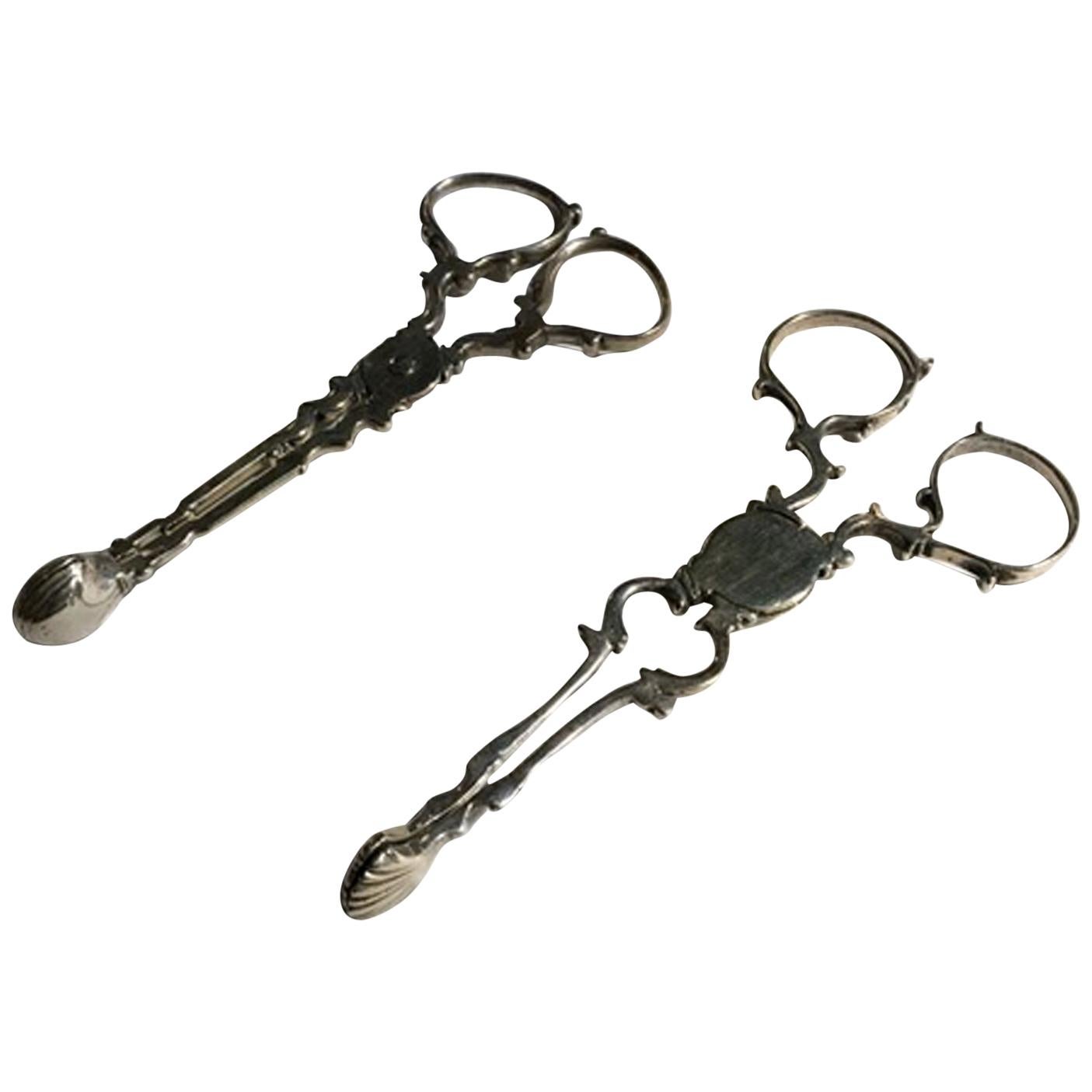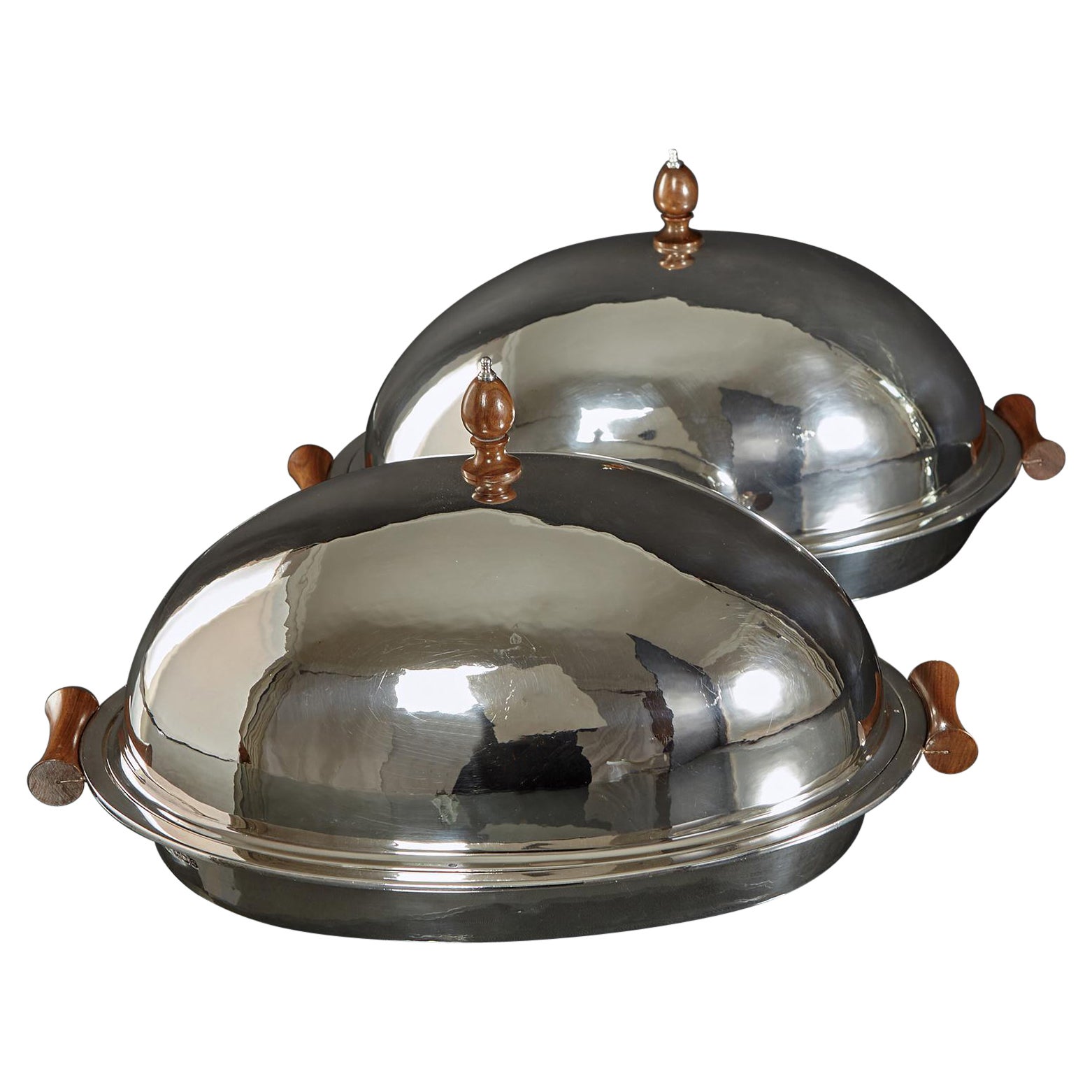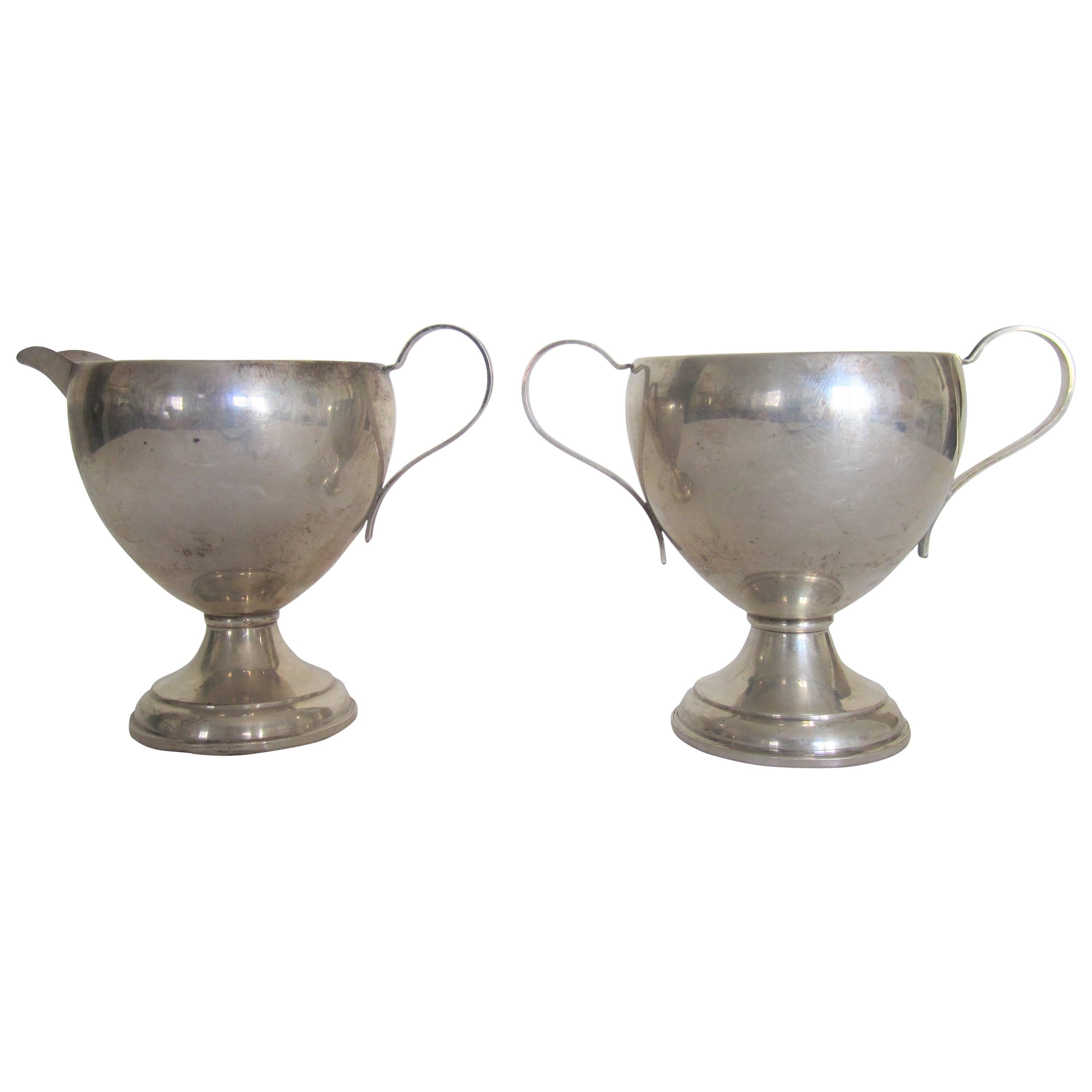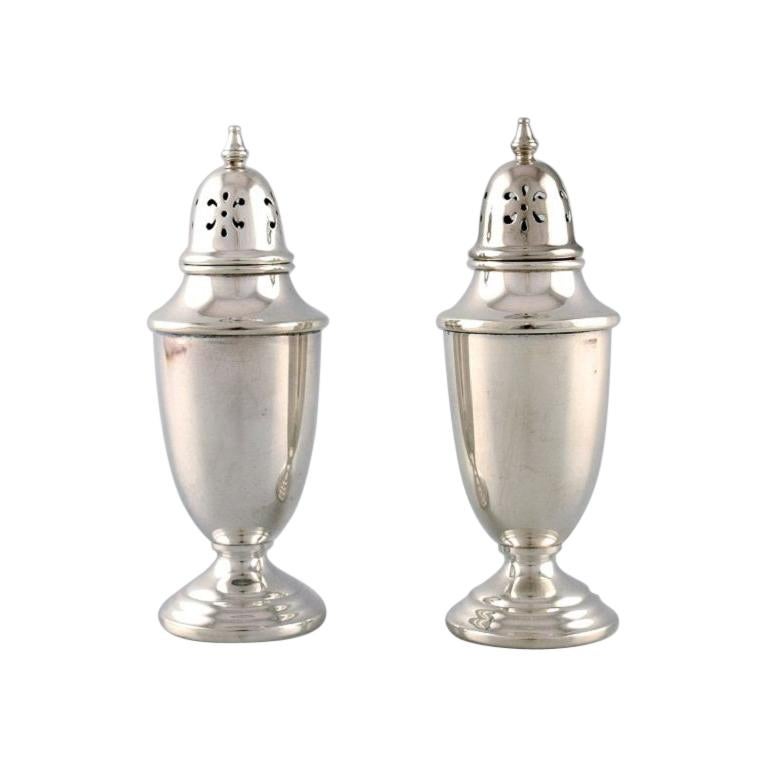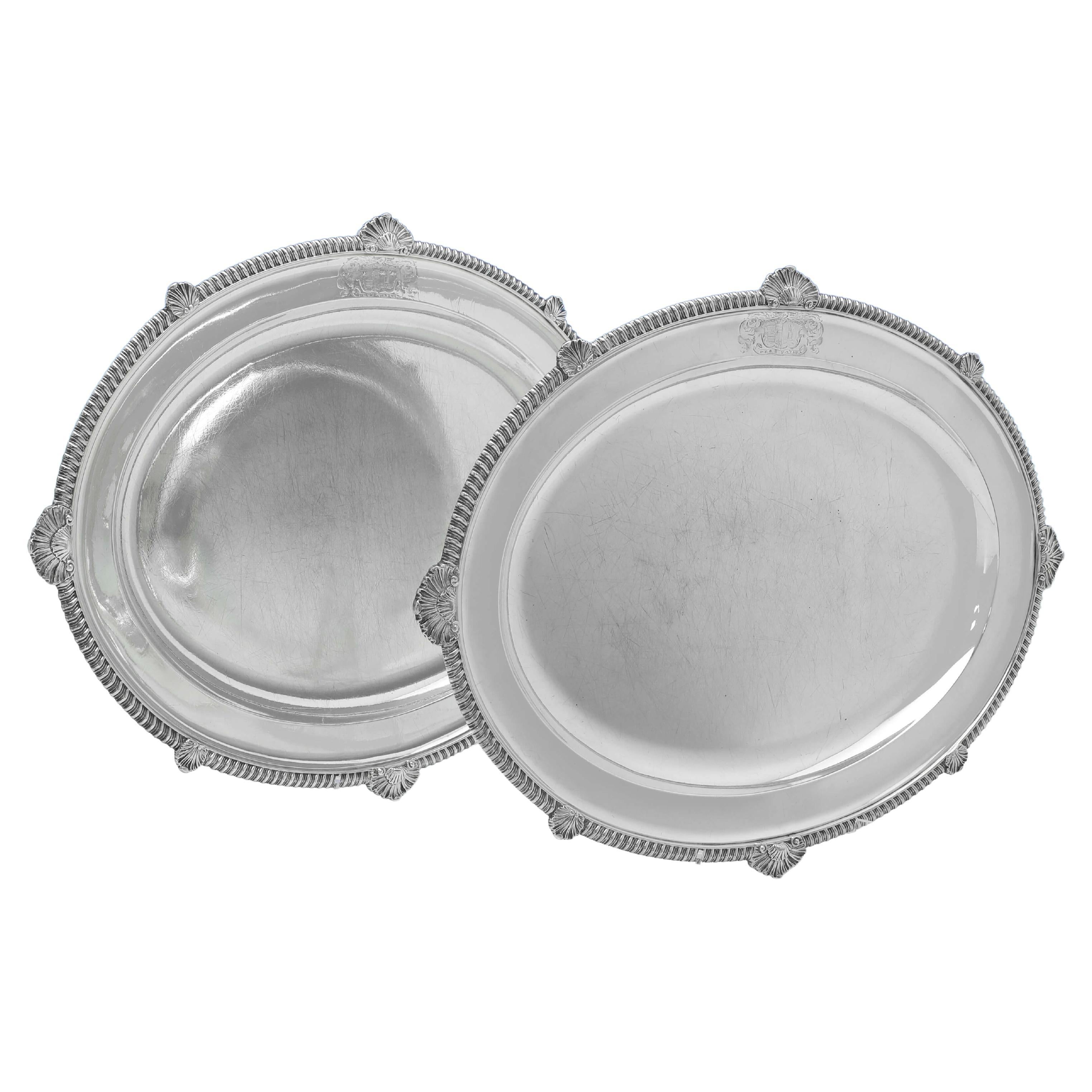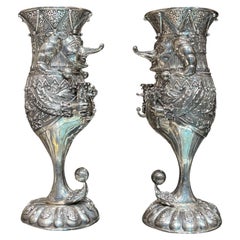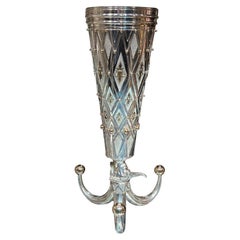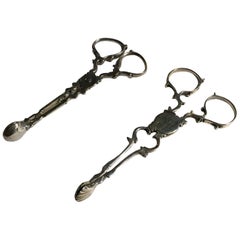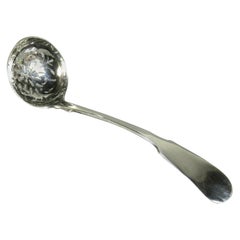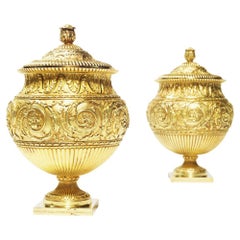
Superb Pair of Regency Silver-Gilt Sugar Vases and Covers
View Similar Items
Want more images or videos?
Request additional images or videos from the seller
1 of 9
Superb Pair of Regency Silver-Gilt Sugar Vases and Covers
About the Item
- Creator:Benjamin Smith II (Maker)
- Dimensions:Height: 7 in (17.78 cm)Diameter: 4.6 in (11.69 cm)
- Style:Regency (Of the Period)
- Materials and Techniques:
- Place of Origin:
- Period:
- Date of Manufacture:1816
- Condition:Wear consistent with age and use.
- Seller Location:New York, US
- Reference Number:Seller: 2181stDibs: LU6079227613752
About the Seller
No Reviews Yet
Vetted Seller
These experienced sellers undergo a comprehensive evaluation by our team of in-house experts.
Established in 1990
1stDibs seller since 2021
Typical response time: 1 to 2 days
More From This SellerView All
- Pair Large Sterling Silver Petrushka Harlequin Wine Goblets by Mihail ChemiakinBy Mihail ChemiakinLocated in New York, USOur sterling silver goblets in the form of the clown, Petrushka, by the Russian artist, Mihail Chemiakin (1943- ) each measure 10 1/2 in (26.7 cm) by 4 in (10.1 cm) and are in excell...Category
Late 20th Century Sterling Silver
MaterialsSterling Silver
- Mihail Chemiakin Large Harlequin Sterling Silver Wine GobletLocated in New York, USOur parcel gilt sterling silver wine goblet by Mihail Chemiakin (1943- ) measures 21 in (53 cm) tall and is in very good condition. Rim with the familiar stamped marks of the artist, including his signature, logo, STERLING, 585 (gold), MAS, and copyright mark. Approximately 3.2 kg (over 110 oz)Category
Late 20th Century Sterling Silver
MaterialsSterling Silver
- Boucheron Parcel Gilt Silver Vase and Oil Lamp circa 1880By Fréderic BoucheronLocated in New York, USOur important parcel-gilt and patinated silver and glass-mounted vase and matching oil lamp were designed by Paul Legrand (1840-1910) and crafted by the silversmith, Charles Glachant, for Boucheron of Paris, circa 1878-1880. 21 in tall and 16.5 in wide (53.4 by 41.9 cm). 28.56 lbs, 457 oz, 14,210 g. Provenance: presented to or purchased by Jean-Baptiste Pezon (1827-1897); acquired by a European private collector, perhaps on the death of Jean-Baptiste Pezon in 1897, by descent; acquired by YM Antiques, 2017. This double walled vase has an amphora form, with body and foot with silver, gilt and patinated and stylized flowers, anthemions and sprays of cherries against an etched and matted ground pierced to reveal a gilt inner wall. The upper body is detachable via a slip-lock, and mounted on both sides with arched panels formed of hexagonal beveled glass tiles. One glass panel applied with bacchic infants taunting a rearing goat and the other side with infants feeding grapes to a lioness under a looming bust of a satyr. The patinated and gilt upswung loop bifurcated handles are mounted with fully modeled figures of Pan bearing a syrinx and thyrsus and a draped maenad playing two flutes, both above roaring lion heads, the rim inset with a slip-lock detachable gilt bowl etched with masks of various representations of Bacchus spaced by ribbons and trophies and with scrolling fruiting vines. The base of interior with detachable base metal drip pan to accommodate the removable oil lamp designed to illuminate the glass tiles from within. The lamp is raised on four hoof feet, the upturned ends cast underneath with masks and with detachable cover mounted with two infant satyrs and flanked by gilt loop handles. The bacchic themed design featuring cartouches depicting infants taunting a goat and lion, plus prominent lion masks at the handles, certainly appealed to Boucheron's customer, Jean-Baptiste Pezon (1827-1897), who is believed to have commissioned the piece. Pezon was the celebrated lion tamer and headliner of the Grande Menagerie whose profession brought him great fame and fortune in Paris. Born a shepherd boy in Lozere, he is said to have left his home at the age of seventeen in the company of a wolf he had captured and trained years earlier. He headed to Paris and by the age of twenty-one purchased his first lion who he named Brutus. The animal is said to have inspired the Lion of Belfort, the monumental red standstone sculpture by Frederic Bartholdi erected in Belfort in 1880. Toulouse-Lautrec was among his admirers and friends, visiting Pezon's Great Lozerian Menagerie to sketch animals. A large bronze sculpture of Pezon atop a female lion adorns the Pezon family tomb in the Pere Lachaise Cemetery in Paris, as seen in our image here. The vase and detachable bowl are marked on the underside with the silversmith's mark of Charles Glachant. The underside and upper rim of the lower body is engraved "Fic Boucheron Paris". The lamp is marked on underside and flange of cover for Glachant. Boucheron archives indicate the vase was inspired by the amphora vases created by the Greek potter, Nikosthenes, 550-510 BC. The Nikosthenic amphora vases are a form of Attic vase recognized for their angular amphora form with broad flat handles. Potted of bright orange-red clay, they were decorated with plant and animal motifs within distinct friezes, with the most significant defining feature being the black figure painting, often highlighted with white accents. In this vase Legrand re-imagines the striking contrast of the black figures against a warm ground through the use of patina and gilding. His inventive use of piercing and double-wall construction create additional levels of texture and depth throughout the body. The same combination of ornamentation was employed in a ewer designed by Legrand in 1880 in the Islamic taste. (See lot 77 of Christie's sale in New York on October 22, 2009.) Edmé Bouchardon (1698-1762), royal sculptor to Louis XV, may have provided Legrand with inspiration for the vase's iconography. The panel featuring bacchic infants taunting a rearing goat is very similar to a bas relief representation of Winter designed by Bouchardon for the Fontaine des Quarte-Saisons on rue de Grenelle, Paris. Bouchardon debuted his plaster model for the bas relief in 1741, and the fountain was completed in 1745. The Boucheron firm, founded by the celebrated jeweler, Frédéric Boucheron...Category
Antique 1880s French Greek Revival Vases
MaterialsSilver
- German Rock Crystal and Gilt Brass Coupe with CoverLocated in New York, USOur extraordinary German cup and cover in the Baroque style, circa 1880s, is crafted from gilt brass and features extensive use of rock crystal, including cabochon and faceted circular jewels. Apparently unsigned. Provenance: Koopman Rare Art, London. Regilded and in excellent condition. There is a soldered repair to the female's spear. Founded in London in 1952, Koopman Rare Art is one of the world’s most admired dealers specializing in antique silver, gold and objects de vertu.Category
Antique Late 19th Century German Baroque Revival Vases
MaterialsQuartz, Brass
- Matched Pair Antique Austrian Silver-Gilt Ewers Circa 1780sLocated in New York, USOur pair of elegant silver-gilt ewers are attributed to the Austrian maker, Johann Georg Hann of Vienna, circa 1780-1800. Heights: 17 7/8 and 22 1/2 in; 45 a...Category
Antique Late 18th Century Austrian Neoclassical Pitchers
MaterialsSilver
- Pair Chinese Fish Form Carved Jade and Gilt Silver Candelabra from CartierBy CartierLocated in New York, USOur pair of rare two-light gilt silver candlesticks from Cartier from the early 20th century feature finely carved jade stone figures of fish. Each 10 by 10 3/4 by 3 1/2 inches. Ma...Category
20th Century French Chinoiserie Candelabras
MaterialsJade, Silver
You May Also Like
- Pair of English Silver-Gilt Sugar CastersLocated in New York, NYEach engraved with a crest and marked: London 1905, maker: Herbert Charles Lambert.Category
Antique Early 1900s English Sterling Silver
MaterialsSilver
- London Mid-18th Century Pair of Regency Silver Sugar NipsLocated in Brescia, ITThis elegant pair of antique silver nips is composed by two pieces, one is cast with shells and the other one with a little shovel shape. Fully silver London marker. With certifi...Category
Antique Mid-18th Century English Regency Sterling Silver
MaterialsSterling Silver
$1,183 Sale Price / set20% Off - Fine Regency Period Sterling Silver Sugar Sifter, Hallmarked Glasgow, 1826By John MitchellLocated in Ottawa, OntarioA fine early 19th century George IV sterling silver sugar sifting ladle, showing a finely pierced bowl and bearing Glasgow Hallmarks with date marks f...Category
Antique Early 19th Century Scottish Regency Sterling Silver
MaterialsSterling Silver
- Pair of Edwardian Antique Silver Serving Dishes and CoversBy William ComynsLocated in London, GBA pair of antique silver game serving dishes and covers. These are quite rare and of a useable size for serving not only game, but also chickens, small roasts and any number of veget...Category
Antique Early 1900s English Edwardian Platters and Serveware
MaterialsSterling Silver
- Antique Sterling Silver Sugar ShakerBy Cornelius Desormeaux Saunders and James Francis Hollings ShepherdLocated in Casteren, Noord-BrabantLarge Sterling silver sugar caster, beautiful model with beautiful decorations in Regency style. The spreader has hallmarks of the city of Chester, dated 1905. The maker's mark is al...Category
Antique Early 1900s English Regency Sterling Silver
MaterialsSterling Silver
- 1890s Victorian Sterling Silver Gilt Sugar Sifter Spoon and BowlBy Goldsmiths & Silversmiths Co. Ltd.Located in Jesmond, Newcastle Upon TyneAn exceptional, fine and impressive antique Victorian English sterling silver sugar sifter spoon and bowl - boxed; an addition to our silver teaware collection. This exceptional antique Victorian sterling silver gilt teaware set consists of a sugar bowl and sifter spoon. The bowl has a circular rounded form to a circular spreading foot. The surface of the bowl is embellished with exceptional chased floral ornamentation accented with scroll designs, all on a matte background. The decoration to the bowl incorporates a putto* design to one side and a scrolling leaf bordered cartouche to the other, displaying the contemporary bright cut engraved crest of a unicorn before trees. The upper portion of this exceptional bowl is encircled with a broad plain border and the rim of the foot is encompassed with an applied decorated border. The exceptional sugar sifter ladle is embellished with further putto and scrolling leaf ornamentation, reflecting the design to that of the bowl. The shell shaped bowl is embellished with scrolling pierced 'sifter' holes to each scalloped flute. The reverse surface of the terminal incorporates a cartouche displaying the aforementioned crest. Each exceptional example of Victorian silverware retains the original gilding. The underside of the sugar bowl bears the retailer's mark 'Goldsmiths & Silversmiths Compy, 112 Regent St'. This antique sugar sifter...Category
Antique Late 19th Century English Late Victorian Sterling Silver
MaterialsSilver, Sterling Silver
Recently Viewed
View AllMore Ways To Browse
Silver Bezel
Antique Glass Marble
Regency Green 19th
Prince Of Wales Silver
George Smith Designs
Large Silver Urn
Used Furniture Wellington
Regency Dining Set Eight
Wellington Antique
Regency Dining Set Of Eight
Pair Of Large Silver Vases
Pair Sterling Candelabra
Sterling Candelabra Pair
Sterling Pair Candelabra
Sterling Silver Candelabra Pair
Candelabra Pair Sterling Silver
Pair Of Antique Engravings
Pair Of Regency Urns

